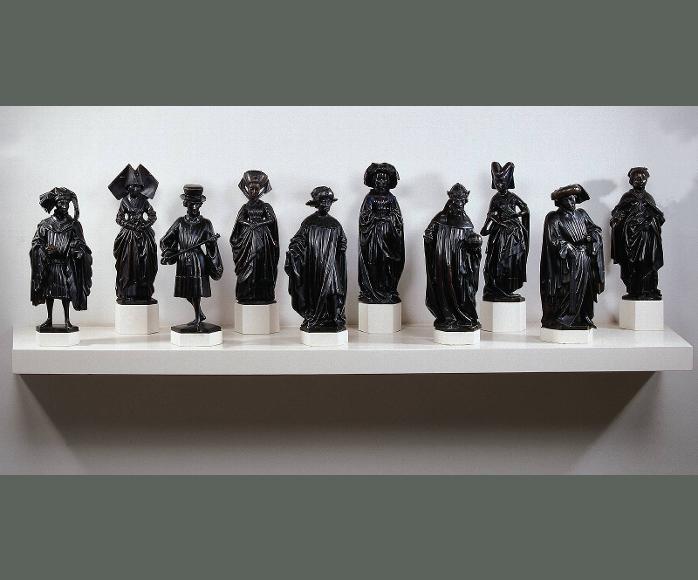Houpelande
A Houpelande (also houpland, houppelande) is an outer garment worn c1356-1450 (most fashionable late in this period) in England, France, Italy and more northerly parts of Europe. The garment is characterised by a very full body which extends outwards gaining fabric from the shoulders, and is then belted into pleats to contain its fullness somwhat. Houpelandes generally have very large sleeves which widen from the shoulder, often ending in fancy patterned dags, or they may be gathered into a cuff at the wrist leaving a very puffy sleeve. Sleeves could be used to hold items or to hold animals, such as rats or small dogs. These animals were used to keep the wearer warm.
Men's houpelandes could reach either be long or short, worn above hose, while women's houpelandes extended to the floor. To properly recreate a man's houpelande, a doublet should normally be worn under this garment.
User's note:: These can be immensely heavy to wear, especially if complete period ensemble is also worn. Imagine carrying a winter overcoat suspended from your shoulders all day long, indoor and out. These are recommended for winter/court wear as they can be very warm and impractical for camping events.
